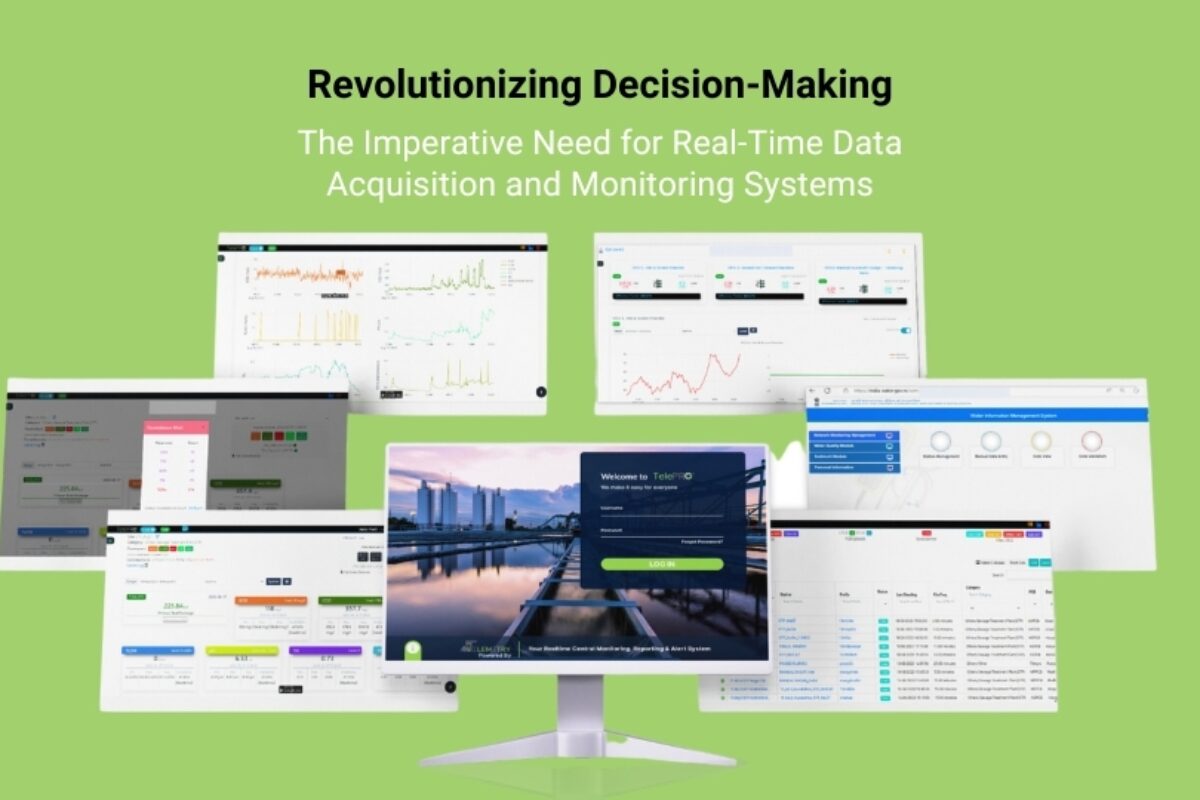Introduction:
In an era dominated by rapid technological advancements, the demand for real-time data acquisition and monitoring systems has become increasingly evident across various industries. Whether in environmental conservation, healthcare, manufacturing, or finance, the ability to access and analyze data in real-time offers unprecedented advantages. This blog explores the critical need for real-time data systems, their applications, and the transformative impact they can have on decision-making processes.
The Essence of Real-Time Data Acquisition:
- Timely Decision-Making: In a fast-paced world, decisions often need to be made swiftly. Real-time data acquisition ensures that decision-makers have access to the most current information, enabling them to respond promptly to changing circumstances.
- Enhanced Accuracy and Precision: Traditional data collection methods may suffer from delays and inaccuracies. Real-time systems provide accurate and precise data, reducing the margin for error in decision-making processes.
- Optimizing Operational Efficiency: Industries such as manufacturing and logistics benefit immensely from real-time monitoring. This technology allows businesses to track production processes, manage inventory, and optimize supply chains with real-time insights, improving overall operational efficiency.
Applications Across Industries:
- Healthcare: Real-time data in healthcare facilitates patient monitoring, drug administration, and treatment adjustments. It enables healthcare professionals to make informed decisions promptly, potentially saving lives.
- Environmental Monitoring: In the realm of environmental conservation, real-time data acquisition is crucial for monitoring air and water quality, tracking climate changes, and responding swiftly to environmental emergencies.
- Finance and Trading: In the financial sector, real-time data is vital for stock trading, market analysis, and risk management. Traders rely on up-to-the-minute information to make timely investment decisions.
- Smart Cities: Real-time data is the backbone of smart city initiatives. From traffic management and energy consumption to public safety, cities leverage real-time monitoring to enhance urban living conditions.
Technologies Enabling Real-Time Monitoring:
- Internet of Things (IoT): IoT devices play a pivotal role in real-time data acquisition. Sensors and smart devices collect and transmit data instantly, creating a network of interconnected systems for seamless monitoring.
- Edge Computing: Edge computing brings data processing closer to the data source, reducing latency. This technology is instrumental in achieving real-time insights without relying solely on centralized servers.
- Cloud Computing: Cloud-based solutions allow for the storage and analysis of vast amounts of real-time data. This technology enables scalability, accessibility, and collaboration across different locations.
Transformative Impact on Decision-Making:
- Agile Business Operations: Real-time data empowers businesses to adapt quickly to market changes, consumer behavior, and industry trends. This agility is essential for staying competitive in dynamic markets.
- Proactive Problem Solving: With real-time insights, organizations can identify and address issues before they escalate. This proactive approach minimizes risks and enhances overall operational resilience.
- Continuous Improvement: Real-time monitoring provides a continuous feedback loop for improvement. Businesses can analyze performance metrics and make data-driven adjustments, fostering a culture of continuous improvement.
Challenges and Considerations:
- Data Security and Privacy: The instant transmission of data raises concerns about security and privacy. Robust cybersecurity measures are essential to protect sensitive information from unauthorized access.
- Infrastructure Requirements: Implementing real-time monitoring systems may necessitate significant investments in infrastructure, including hardware, software, and network capabilities.
Conclusion:
In a world where information is power, real-time data acquisition and monitoring systems have emerged as indispensable tools across various industries. The ability to access, analyze, and act upon data in real-time not only enhances decision-making processes but also drives innovation and fosters a culture of continuous improvement. As technology continues to evolve, organizations that embrace real-time data monitoring will undoubtedly position themselves at the forefront of their respective fields, ready to meet the challenges of an ever-changing landscape.

